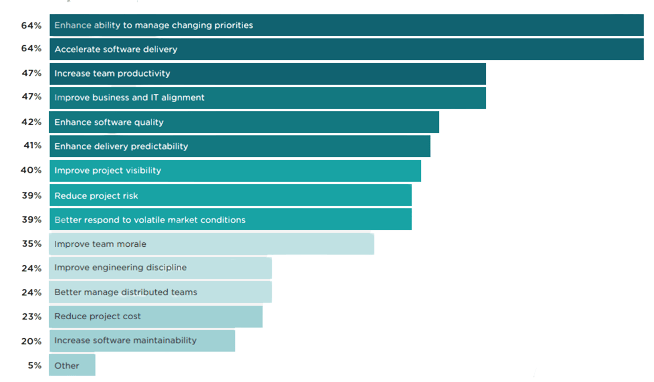From front-end developers to API innovators, today’s advancements in tools, technologies, and the cloud make it an exciting time to be developing software and services. Over the past two years having gone through the rollercoaster of global events, one of the major shifts we’ve come to realize is how reliant we’d become on digital infrastructure, driven by necessity. The system held up admirably, even as the people maintaining it struggled to invent new ways of working.
If you were to ask almost any software developer if the program they just finished developing is good enough, and they will say it could be better, similar to the way a musician will finally just release an album, even though they don’t consider it done.
What Is Agile Software Development?
The Agile software development life cycle is the structured series of stages that a product goes through as it moves from beginning to end. It contains six phases: concept, inception, iteration, release, maintenance, and retirement
How organizations are adopting to the Agile Development Methodology
Since the global pandemic emerged in early 2020, organizations are now aware of the opportunities and challenges ahead and realize being successful in the digital age requires agility in software development and delivery, as well as business strategy and operational executions.
According to a survey conducted by Digital.ai, when respondents were asked “What were the most important reasons for adopting Agile within your team or organization?” The two most urgent reasons for adopting Agile are the speed and flexibility required by working environments that continue to be both unpredictable and volatile. These are closely followed by a continued need to focus on alignment across teams to streamline the software delivery process.

Supported by shifts toward value stream management and business agility, survey respondents indicate their organizations are now better able to meet their agile transformation goals based on their continued adoption of agile practices.
A Few Key Benefits Of The Agile Process
Well executed Agile software development methodology helps teams significantly improve the quality of their software at each release. Not only that, it allows teams to adapt to change quickly.
- Total transparency and involvement of multiple stakeholders;
An agile software development process requires involvement and collaboration which is not found in more traditional methods where each phase often only involves a specific set of individuals with expertise to accomplish the tasks for that phase, which limits transparency.
In Agile, before each sprint, the entire team reviews, validates, and agrees on which user stories to assign to the sprint. The developers, analysts, testers, and product owner work together to accomplish the items assigned to the sprint. The team meets daily to keep everyone on the same page. Throughout the sprint, each team member verifies each feature and works closely with the developers to ensure it meets the customer’s needs.
- Better control on the overall project;
In the Agile software development process, the product owners are very active participants in every sprint, working together with the other teams to determine what goes into each sprint. This way, there is less of a chance of surprises or unnecessary features making its way into the development process.
- Greater product quality;
On an Agile project, the team does not attempt to develop all features at once. Instead, the team assigns a smaller subset of features to each sprint. That way, the developers have more time to perfect those items before release.
Working on a product in small incremental releases ensures that each sprint results in a fully tested and working product.
Conclusion; Using The Agile Development Cycle On Your Next Project Might Be Your Better Option
There’s no doubt about it: agile is a powerful and efficient method for software development. It does not simply offer benefits to the development team but also has business advantages to the client.
With the agile software development life cycle model, teams can easily handle many of the typical project pitfalls involving costs, scope, and conflicting schedules in a more controlled way.
By organizing and reinventing activities related to custom software development, agile achieves its many objectives in a leaner, more efficient, and more business-focused manner.
Indubitably, the agile software development cycle is powerful and efficient methodology for both the client and the software development team. The typical project pitfalls such as unexpected costs, scope and conflicting schedules can be managed and controlled to achieves its many objectives in a leaner, more efficient, and more business-focused manner.

